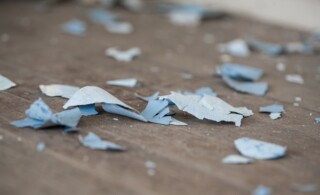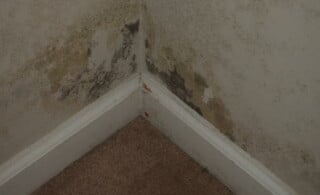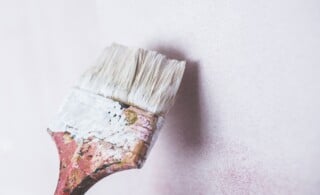
Since 1978, lead-based paint has been banned in the United States, so there is practically no risk in newer homes, except from older painted furniture. Homes built between 1950 and 1978 are likely to have lead-based paint, while ones built before 1950 almost certainly have lead-based paint.
Lead was used in all kinds of paint, so any older, painted surface is suspect. Cracked or peeling paint poses the most obvious threat.
There is also risk when an older painted surface is sanded, scraped or sawed as part of a painting, repair or improvement project.
In addition, windows can be a problem because friction in the sashes slowly grinds up layers of old paint–some of which may contain lead. The resulting contamination can be easily inhaled or ingested.
Lead tends to build up in the body causing a wide variety of mental and physical health problems. The risk is greatest for children under seven and for pregnant women, but lead is bad for everyone. In fact, more ill effects are being discovered all the time.
One long-term strategy for minimizing the problem is to maintain all painted surfaces so that older paints don’t get a chance to crack and peel.
Lead Paint Containment
Anytime a repair or improvement project involving cutting, sanding or scraping of older painted surfaces is going to take place, try to seal off the area with plastic tarps.
This way the dust cannot travel indiscriminately throughout the house or yard.
When the job is finished, the tarps should be carefully folded and discarded. Use a spray bottle of water to wet surfaces in order to minimize airborne dust levels.
Some power tools, such as sanders, can now be purchased with built-in vacuum systems that capture the dust as it is created. To be effective against lead, the vacuum system must be marked as being of the HEPA (High Efficiency Particulate Air Filter) type.
Personal Protection Against Lead Paint
If you are going to spend time in the work zone, you should wear a respirator with a HEPA filter. A regular face mask won’t do much good.
Also, if there is a lot of dust or if you’re certain contains lead, consider wearing disposable coveralls. If you don’t wear disposable coveralls, remove an work clothes as you leave the work area and wash them separately from other clothes.
Generally, you want to keep dust levels at a minimum. After any kind of work has been done, it becomes critical to clean up thoroughly and immediately. The best strategy is to use a high phosphate detergent like TSP (trisodium-phosphate, available at hardware and paint stores) or automatic dishwasher soap and thoroughly wipe all surfaces.
Remember to never use a standard vacuum cleaner, as it just stirs up the dust and redistributes it more widely throughout the house. Only HEPA vacuum cleaners are effective for picking up and trapping lead paint dust.
 What Do I Do If My Home Has Lead Paint
What Do I Do If My Home Has Lead Paint  How to Remediate Mold
How to Remediate Mold  Exterior Painting Techniques
Exterior Painting Techniques  Choosing Exterior Paint Colors
Choosing Exterior Paint Colors  Guide to Room-by-Room Repairs for Easy Accessibility for Disabled Loved Ones
Guide to Room-by-Room Repairs for Easy Accessibility for Disabled Loved Ones 

Are You Familiar With This Topic? Share Your Experience.